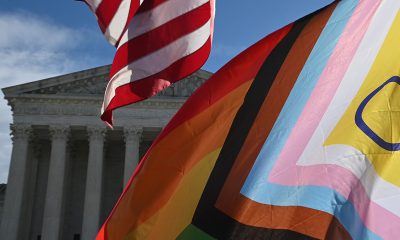Health
Local LGBT groups assist with Obamacare
Whitman-Walker, Us Helping Us, D.C. Center helping uninsured sign up
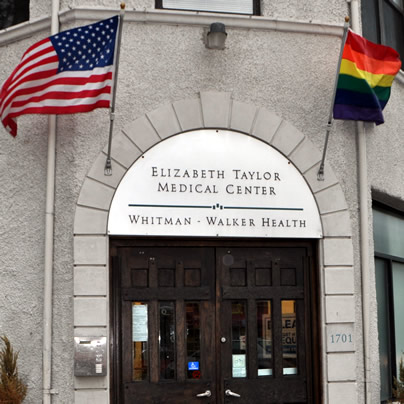
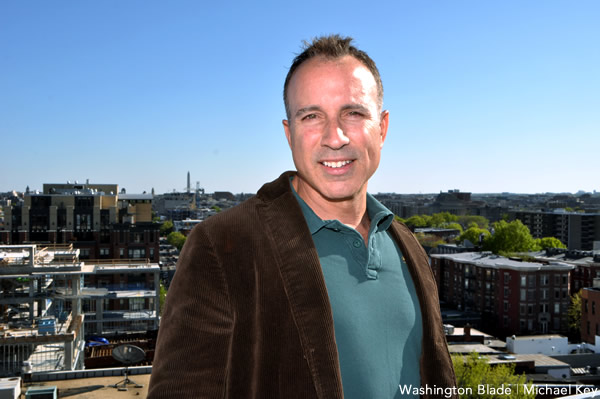
Local businessman David Franco was among several D.C.-area advocates who spoke at a news conference at the National Press Club on Tuesday to draw attention to what they consider the strong advantages of the Obamacare program. (Washington Blade file photo by Michael Key)
At least seven D.C.-based LGBT or LGBT-friendly organizations sprang into action on Tuesday to help members of the LGBT community and people with HIV choose a health insurance plan under the controversial U.S. Affordable Care Act that’s better known as “Obamacare.”
Similar to reports surfacing from across the country, officials from the local groups said some of their clients encountered computer glitches on the website for D.C. Health Link, the city’s online health insurance marketplace or “exchange” on its first day of operations on Tuesday.
But all of the officials contacted by the Blade said they were optimistic that the exchange program in D.C. and those in neighboring Maryland and Virginia would soon be operating smoothly and would be an important resource for LGBT people looking for health insurance.
“I’m excited about it,” said Ron Simmons, executive director of the D.C.-based Us Helping Us, an HIV services organization that reaches out to black gay men.
“We have so many clients who don’t have health insurance,” Simmons said. “If you are HIV positive you need a certain type of insurance, and we are ready to help people choose the best policy suited for their needs.”
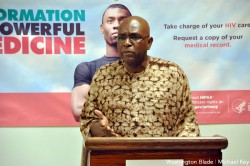
Ron Simmons, president/CEO of Us Helping Us (Washington Blade photo by Michael Key)
Us Helping Us is one of five D.C.-based organizations that received a grant from the D.C. Health Benefit Exchange Authority to recruit members of the LGBT community to sign up for insurance under the Obamacare program. The grant calls on the five groups — as well as another 30 organizations that received grants to work with other constituencies — to help their clients navigate the complicated process of choosing the best possible insurance plan.
The other organizations that received grants to work with the LGBT community on the Obamacare program are Whitman-Walker Health, D.C. Care Consortium, Damien Ministries and Health HIV.
Health HIV, a new national AIDS advocacy organization located in the Dupont Circle area, applied for its grant in partnership with the D.C. Center for the LGBT Community and Westminster Presbyterian Church’s START program. The START program provides HIV/AIDS-related services with a special outreach to people with substance abuse problems.
“This is an important opportunity to engage our communities in a conversation about healthcare and for us all to better understand the changes that are taking place in the healthcare system,” said David Mariner, executive director of the D.C. Center.
“Our goal is to help 300 individuals enroll in a healthcare plan and to make the process as simple as possible for them,” Mariner said.
Simmons of Us Helping Us said his group has a goal of helping to enroll 1,000 people on a health insurance plan through the D.C. Health Link system during the nine-month-long grant period.
“We will have town hall meetings,” said Simmons. “We will go to the clubs. Our purpose is to help people enroll in the plan best for them.”
Under the Affordable Care Act’s various provisions, Tuesday, Oct. 1, became the first day that the health insurance exchanges opened for business, enabling people to review dozens of options for insurance plans. Consumers may sign up for a plan between now and next March during the program’s first annual open enrollment period. Insurance policies won’t go into effect until Jan. 1.
In order to receive a policy that begins Jan. 1, people must sign up and pay their first monthly premium by Dec. 15, government officials in charge of the program said. People may still sign up between Dec. 15 and March 31, with their policy taking effect at the first day of the following month. After the March 31 deadline, enrollment in the program will be closed until October 2014.
Experts monitoring the system have said the cost of premiums and additional payments such as deductibles and co-payments for doctor visits and prescription drugs vary widely with the different options available. But those familiar with the program say the costs so far appear to be significantly lower than health insurance available in the past in the private market.
Carl Schmid, deputy director of the AIDS Institute, a national AIDS advocacy organization, noted that low-income people may now enroll in Medicaid in the states that have agreed to expand their Medicaid programs under a non-mandatory provision of the Affordable Care Act. D.C. and Maryland opted to become part of the expanded Medicaid program while Virginia declined to do so.
Schmid points out that prior to the Affordable Care Act’s Medicaid provision, which took effect last year, low-income people with HIV who didn’t have private health insurance were not eligible for Medicaid unless they were medically disabled with an AIDS diagnosis.
“So now people with HIV who don’t have full-blown AIDS qualify for Medicaid,” Schmid said. “Our goal, of course, is to keep these people healthy.”
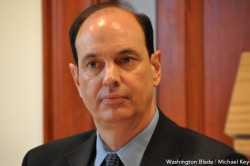
AIDS Institute Deputy Executive Director Carl Schmid (Washington Blade file photo by Michael Key)
Schmid and others familiar with the Obamacare program note that in Virginia and other states that chose not to participate in the expanded Medicaid program, people with incomes below a certain federally defined level are eligible for federal subsidies to help pay for their insurance premiums and co-pays.
Erin Loubier, director of public benefits and senior managing attorney for Whitman-Walker Health, said people with HIV and LGBT people whose income levels may not make them eligible for the subsidies will benefit from another provision of the healthcare law already in effect.
“Anyone living with HIV or another chronic health condition will be able to get insurance,” she said, noting that prior to the Obamacare law insurance companies routinely rejected people with a pre-existing condition.
She said the generally lower prices for premiums through the exchanges will also benefit those who aren’t eligible for subsidies.
Under its grant from the D.C. Health Benefit Exchange Authority, Whitman-Walker will provide its clients as well as non-clients the services of trained “navigators” or “assisters” to help people choose the best insurance policy through D.C. Health Link. According to Loubier, Whitman-Walker will also provide training for people to become navigators and, similar to Us Helping Us, will reach out into the community to recruit people to sign up for insurance under the Obamacare program.
“The role of these assisters is critical,” she said. “Even computer savvy people may not be able to navigate the system by themselves.”
Guy Westin, executive director of D.C. Care Consortium, which provides services to people with HIV, said his group is providing navigator services to individuals as well as non-profit community organizations about the enrollment process for Obamacare.
D.C. gay businessman David Franco, owner of the clothing store chain Universal Gear and the real estate development company Level Two, said he was pleased to discover that prices announced so far by insurance companies offering employer health plans for small businesses are lower than previously available plans.
“I was able to see in a matter of 15 minutes with a couple of clicks on my keyboard what my rate would be and compare that to an equivalent plan and see the savings that are offered by different insurance companies,” Franco said.
“So the fact that you’ve got this open, free market has really created this price competition, and it’s going to drop the overall cost for the plan for all of my employees,” he said.
Franco was among several D.C.-area advocates who spoke at a news conference at the National Press Club on Tuesday called by D.C. Health Link and the healthcare consumers’ group Families USA to draw attention to what they consider the strong advantages of the Obamacare program.
Similar to Americans across the country, local LGBT advocates working on the Obamacare program say some LGBT people will likely be surprised and put off when they realize they will be subjected to a $95 tax penalty from the IRS in 2014 if they don’t have insurance and fail to buy a policy under the new program. The penalty for not having insurance in 2015 goes up to $700.
Federal officials in charge of Obamacare point out that people who already have insurance either through their employer or on the private market and people already on Medicaid or Medicare will not be required to do anything under the new program. Their insurance status will remain as it is, officials said.
Following is a list of the seven D.C.- based organizations known to be providing services to the help the LGBT community and people with HIV access the Obamacare program, including the process of singing up for an insurance plan. Officials with the groups say it’s preferable to call first for an appointment but walk-ins are accommodated when possible.
Whitman-Walker Health
1701 14th St., N.W.
Us Helping Us
3636 Georgia Ave., N.W.
D.C. Care Consortium
7059 Blaire Road, N.W., Suite
Health HIV
2000 S St., N.W.
Damien Ministries
2200 Rhode Island Ave., N.E.
D.C. Center for the LGBT Community
1318 U St., N.W.
START Program at Westminster Presbyterian Church
400 I St., S.W.
Health
Developing countries to receive breakthrough HIV prevention drug at low cost
Announcement coincided with UN General Assembly
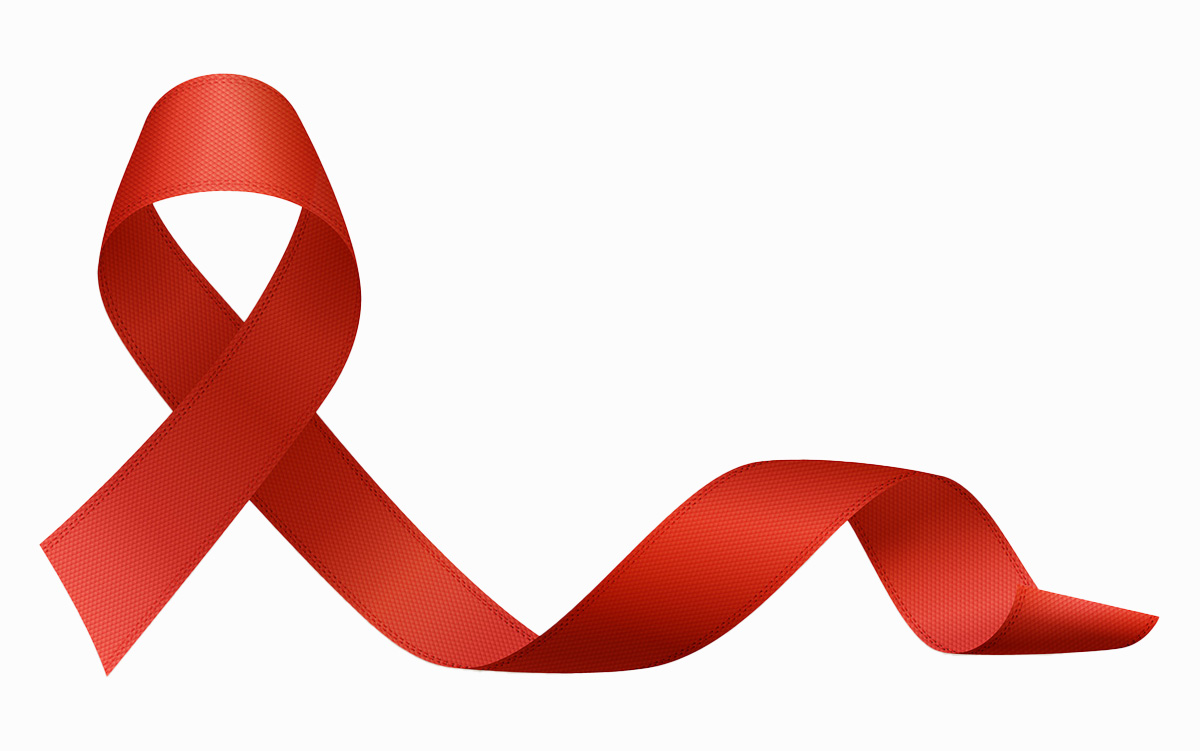
Philanthropic organizations on Wednesday announced two agreements with Indian pharmaceutical companies that will allow a breakthrough HIV prevention drug to become available in developing countries for $40 a year per patient.
The New York Times notes Unitaid, the Clinton Health Access Initiative, and Wits RHI reached an agreement with Dr. Reddy’s Laboratories to distribute lenacapavir. The Gates Foundation and Hetero brokered a separate deal.
Unitaid, the Clinton Health Access Initiative, Wits RHI, and the Gates Foundation announced their respective agreements against the backdrop of the U.N. General Assembly.
Lenacapavir users inject the drug twice a year.
UNAIDS in a press release notes lenacapavir in the U.S. currently costs $28,000 a year per person.
“This is a watershed moment,” said UNAIDS Executive Director Winnie Byanyima in a statement. “A price of USD 40 per person per year is a leap forward that will help to unlock the revolutionary potential of long-acting HIV medicines.”
The State Department earlier this month announced PEPFAR will distribute lenacapavir in countries with high HIV prevalence rates. A press release notes Gilead Sciences, which manufactures the drug, is “offering this product to PEPFAR and the Global Fund at cost and without profit.”
Health
Don’t just observe this Suicide Prevention Month
Crucial mental health are being defunded across the country

September is Suicide Prevention Month, a time to address often-ignored painful truths and readdress what proactivity looks like. For those of us who have lost someone they love to suicide, prevention is not just another campaign. It is a constant pang that stays.
To lose someone you love to suicide is to have the color in your life dimmed. It is beyond language. Nothing one can type, nothing one can say to a therapist, no words can ever convey this new brand of hurting we never imagined before. It is an open cut so deep that it never truly, fully heals.
Nothing in this world is comparable to witnessing someone you love making the decision to end their life because they would rather not be than to be here. Whether “here” means here in this time, here in this place, or here in a life that has come to feel utterly devoid of other options, of hope, or of help, the decision to leave often comes from a place of staggering pain and a resounding need to be heard. The sense of having no autonomy, of being trapped inside pressure so immense it compresses the will to live, is no rarity. It is a very real struggle that so many adolescents and young adults carry the weight of every day.
Many folks in our country claim to uphold the sanctity of human life. But if that claim holds any validity or moral grounding, it would have to start with protecting the lives of our youth. Not only preventing their deaths but affirming and improving the quality of their lives. We need to recognize and respond to the reality that for too many adolescents and teenagers, especially those who are marginalized and chronically underserved, life does not feel so sacred. It feels damn near impossible.
Today, suicide is the second leading cause of death for Americans ages 10 to 24. That rate has almost doubled since 2007. Among queer-identifying youth, the statistics are crushing. Nearly 42 percent have seriously considered suicide in the past year, and almost 1 in 4 have attempted it. These are not just numbers. These are the children and teens we claim to care for and protect. These are kids full of potential and possibility who come to believe that their lives are too painful or meaningless to go on.
For our youth who identify as both queer and BIPOC, the numbers soar to even more devastating heights. Discrimination, housing insecurity, trauma (complex, generational, or otherwise), and isolation pile on the already stacked mental health risks. Transitional times like puberty, continuing education, coming out, or even being outed can all become crisis points. And yet, the resources available to support these youth remain far too limited, particularly in rural and underfunded communities.
We must also call out a disheartening truth. Suicide is not just a mental health issue but also a political one. Despite years of advocacy and an undeniable increase in youth mental health crises, funding for prevention is barely pocket change in regard to national budgets. In 2023, the federal government spent an underwhelming $617 million on suicide prevention efforts. To provide some perspective, that’s less than what we spend each year defending the border wall.
Meanwhile, school-based mental health services, one of the most effective means of reaching children and teens early, are being decimated. A $1 billion mental health grant program, which began after the Uvalde school shooting aiming to increase school counseling services, was recently pulled from hundreds of school districts. In some places, that left over 1,000 students for every one mental health provider. And in others, it left entire counties with zero youth therapists.
This rollback is not an isolated agenda. It operates in tandem with a cultural and legislative attack on the LGBTQ community and our access to affirming education, healthcare, and visibility. Programs that create safe spaces and lifelines are being wiped away. The LGBTQ line of the 988 suicide hotline, created to offer identity-affirming, culturally competent crisis support, was recently defunded, despite having provided help to over 1.3 million callers. The political message here is unmistakable. Only some lives, some pain, and some needs of a select group are worth the money and care.
I can’t help but contrast this with how our country controls the process of childbirth. Over the last decade, particularly following growing awareness and resulting concern around maternal mortality rates, the U.S. has consistently increased investment in maternal health. Federal funds now support initiatives like Healthy Start, safety improvements in birthing facilities, and dedicated maternal mental health hotlines. In 2022, the Into the Light Act was passed, allocating $170 million over six years for screening and treatment of postpartum mental health conditions. These are great and necessary efforts. But even here, we fall short. A study published in “JAMA Psychiatry” in November 2023 examined drug overdose deaths among pregnant and postpartum women in the U.S. from 2018 to 2021. The findings revealed that suicide and overdose were the leading causes of death during this period.
Yet even this limited progress for new parents shows us an undeniable contradiction. As a nation, we have shown we are capable of legislating support for life when we are politically and morally motivated to. We can pass bills, allocate funds, and create crisis hotlines. What’s missing is the motivation to extend that same urgency to the mental health and well-being of young people before they become statistics.
At the same time, astonishing amounts of public money have been directed toward restricting reproductive freedom. Since the overturning of Roe v. Wade in 2022, states have collectively spent hundreds of millions of dollars enforcing abortion bans, funding legal battles, surveillance infrastructure, and crisis pregnancy centers that often provide misleading information.
In 2023 alone, Texas allocated over $140 million to the Alternatives to Abortion program, while at the same time slashing funding to health providers that offered comprehensive reproductive care. Nationwide, anti-abortion lobbying and litigation have received sustained state and federal backing, often at the expense of preventive care, contraception access, and the very maternal health supports that claim to be prioritized. Only the willful can ignore the blatant contradiction here. While suicide and overdose silently claim the lives of mothers post-childbirth, far more political and financial energy is funneled into controlling whether people can become mothers in the first place.
Real prevention should not be limited to easy words and good intentions each September. Real prevention should be about intrenching mental health support into the daily lives of young folks. It means funding school counselors and social workers so that every child has someone to talk to. It means restoring services that center the needs of queer, Indigenous, and BIPOC youth, who are far too frequently left behind. It means guaranteeing that crisis lines are open. It means creating and nurturing environments where vulnerability is not discouraged but invited.
We also have to stop criminalizing mental health crises. Way too often, suicidal and struggling youth are met with handcuffs or hospitalization that adds layers to trauma rather than with compassion. Prevention must be proactive, not punitive. We need peer support groups, trauma-informed teachers, and trusted adults who are trained to notice the signs before the worst happens.
We are also overdue for a culture shift. A society with the alleged aim to value life does not shame those who are struggling to hold onto it. Contrary to popular unsaid belief, strength is not stoicism. Strength is connection. It’s knowing when to ask for help.
If we as a country actually and honestly cherish life, we have to prove it. We have to prove it not with words but with resources, policy, and compassion. Suicide prevention cannot begin and end with simple slogans and annual awareness. It has to mean a continuous investment in systems of care that affirm life, especially for those who are most vulnerable.
This September, as we recognize Suicide Prevention Month, I dare us to do more than to just memorialize those lost. Let’s start fighting for those living. Let’s create a world where no child, teen, or young adult feels that their only way out is to stop living. They are not expendable. They are not alone. And their lives are sacred. If only we had the heart to act like it.
I am almost ashamed to say that it wasn’t until I lost someone I love to suicide that I began volunteering my time to the American Foundation for Suicide Prevention. The work that the AFSP does is not only needed, it’s imperative today more than ever. If nothing else, please hit this link and donate.
Health
GLP-1s can help address LGBTQ healthcare barriers: experts
Queer people more subject to body dissatisfaction

Dana Piccoli tried everything to lose weight.
She frequented the gym, went on and off diets and hired a personal trainer. When Piccoli decided to get on a GLP-1, it wasn’t a “short cut” to drop weight – it was a way for her to live her life comfortably.
“When I told someone I was on it, they were like, ‘I’m going to the gym because I want to do it the right way,’” said Piccoli, managing director of queer media collaborative News is Out. “Obviously that kind of stung because for me, this is the right way.”
GLP-1 drugs have caused quite a stir since becoming more integrated into mainstream medicine. The newness of some brands, like Ozempic, have led to stigmas and mistrust surrounding them. These stigmas disproportionately affect the LGBTQ+ community since queer people are more subject to body dissatisfaction and have more trouble finding accessible healthcare.
Through all the noise, however, experts say taking GLP-1s are safe with the right counseling, and LGBTQ+ people could largely benefit from them.
So, what’s all the ruckus about? Are GLP-1s an “easy way out” to lose weight? And how do they really impact the LGBTQ+ community?
How GLP-1s work
GLP-1s, or glucagon-like peptide-1, mimic the actions of a GLP-1 that is released by the gut after eating. It can help people with Type-2 diabetes by lowering blood sugar through the release of insulin, and can help those with obesity by slowing down digestion and, in turn, reducing one’s appetite.
Like any medication, there are some side effects to consider. Sangeeta Kashyap, assistant chief of clinical affairs at Weill Cornell Medicine, said symptoms like nausea, diarrhea, and vomiting can occur. However, Kashyap said these side effects are less severe than past GLP-1 brands – a reason that contributes to their newfound popularity – and can be better managed with proper guidance.
Since the drug causes a loss of both fat and muscle loss, she said doctors should inform patients to do strength training to maintain any deteriorating muscle, and to eat high-protein diets, since fatty foods increase the risk of vomiting or nausea.
Getting on a GLP-1 isn’t just about shedding a few pounds. Kashyap said it’s a commitment to your health and body, which is why talking with a doctor and understanding the risks are crucial.
“We give patients appropriate guidelines,” Kashyap said. “We do blood tests, we monitor things, and give a lot of counseling to these patients. I don’t think you could just give the medicine out like candy.”
Piccoli, who started her GLP-1 journey with her wife, said the medication helped turn off “food noise.”
“Your motivation for things, your reward system with food is kind of disabled,” Piccoli said. “That really helped me understand my relationship with food.”
Turning down food noise
Losing weight isn’t as easy as getting on a GLP-1 and eating less. Piccoli said turning off the food noise in her brain led to a complete lifestyle shift.
“I had to completely change everything about the way I eat, everything about the way I approach food,” she said about her experience taking Mounjaro. “This has been one of the hardest things I’ve ever done.”
Kashyap said the lifestyle change that comes with taking a GLP-1 is why it’s important to consult a doctor first to understand how it could affect you not just physically, but also emotionally.
Kashyap said she sees higher rates of mental health disorders in transgender women, a community that already faces more barriers in finding accessible healthcare.
This could lead to someone getting on the drug for the wrong reasons, Kashyap said. She noted that those with eating disorders or body dysmorphia could face more severe side effects. Body dysmorphia and body image concerns are already an issue for the LGBTQ+ community, Kashyap said, so prescribing GLP-1s needs to be handled with care.
One way to ethically prescribe a GLP-1 to a patient would be to conduct a mental health screening, according to Kashyap. Mental health screenings aren’t required to get on a GLP-1, but Kashyap said they would be beneficial to patients who may be prone to negative effects by taking the drug.
Although some people may see more severe side effects, Caroline Apovian, co-director of the Center for Weight Management and Wellness at Brigham and Women’s Hospital, said GLP-1s are a completely safe and rigorously tested drug.
If a person faces negative side effects from taking a GLP-1, it’s more about how their body or brain is reacting to it than the drug itself being unsafe.
“Any kind of weight loss is going to affect your mood, either positively or negatively,” Apovian said.
With the queer community already facing increased barriers to healthcare, there’s another issue to consider: GLP-1s aren’t cheap.
Depending on where you get it from and whether or not insurance covers it, you could pay hundreds or even thousands of dollars for a limited supply.
Piccoli said she paid out of pocket and had to make sacrifices for her and her wife to both get on a GLP-1.
“I didn’t renew my car lease,” Piccoli said. “We decided to go down to one car so that we had some extra income monthly to be able to pay for it.”
On the other hand, Matt, who requested to be identified only by his first name due to the sensitivity of the topic, said he was shocked at how easy it was to get the cost of his GLP-1 covered by insurance. He had been warned by his doctor about the difficulty of getting it covered, and expected an “uphill battle.”
“[My doctor] wrote out the prescription for me, and on my way home, I got a text message from the drugstore saying it was ready to go,” said Matt, who’s lost 48 pounds on Ozempic since June 2024.
Matt said experiences like his, although not the standard, are why it’s important to talk with your doctor about getting on a GLP-1 and see for yourself rather than taking advice from social media stigmas.
Kashyap said the drug is also becoming more accessible through websites like Lilly, which provide vials for about $300-500. While that isn’t pocket change, it’s significantly cheaper than retail pharmacies.
You may have to make sacrifices like Piccoli did, but getting access to modern GLP-1s for weight loss isn’t only for the Hollywood elites like it seemed to be a few years ago.
Through all the social stigmas and uncertainty, Kashyap and Apovian agreed that GLP-1s are a major benefit for the queer community.
Trans women have increased rates of obesity, Type-2 diabetes and metabolic syndrome, according to Kashyap. Estrogen treatments increase fat mass and insulin resistance, leading to higher obesity rates in trans women. Kashyap said GLP-1s could be helpful in mitigating those effects.
GLP-1s also reduce alcohol cravings, so Kashyap noted that anyone struggling with alcoholism may see improvements with that condition upon getting on the drug.
Getting on a GLP-1 isn’t the walk in the park some may make you believe it is – it’s a lifestyle change and health commitment.
But it’s also a change that can provide good and healthy results if you seek the appropriate guidance from a professional.
While social stigmas in the queer community may lead to misinformation on who should use it and what it should be used for, GLP-1s are safe and can be a much-needed relief for a community facing significant healthcare obstacles.
-

 District of Columbia2 days ago
District of Columbia2 days ago‘Sandwich guy’ not guilty in assault case
-

 Sports3 days ago
Sports3 days agoGay speedskater racing toward a more inclusive future in sports
-

 Celebrity News5 days ago
Celebrity News5 days agoJonathan Bailey is People’s first openly gay ‘Sexiest Man Alive’
-

 Michigan4 days ago
Michigan4 days agoFBI thwarts Halloween terror plot targeting Mich. LGBTQ bars



